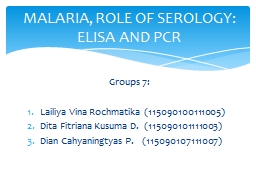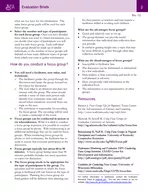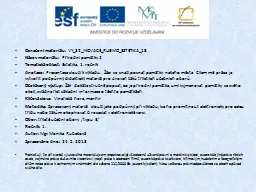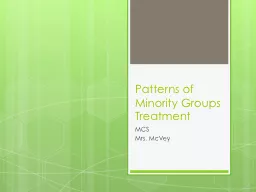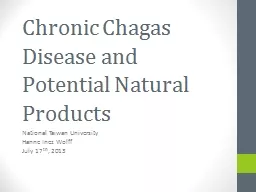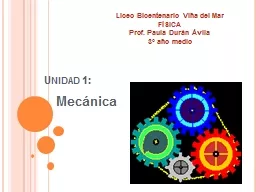PPT-Groups 7: Lailiya Vina Rochmatika (115090100111005)
Author : phoebe | Published Date : 2024-02-02
Dita Fitriana Kusuma D 115090101111003 Dian Cahyaningtyas P 115090107111007 MALARIA ROLE OF SEROLOGY ELISA AND PCR Malaria is a disease caused by parasites of the
Presentation Embed Code
Download Presentation
Download Presentation The PPT/PDF document "Groups 7: Lailiya Vina Rochmatika (1150..." is the property of its rightful owner. Permission is granted to download and print the materials on this website for personal, non-commercial use only, and to display it on your personal computer provided you do not modify the materials and that you retain all copyright notices contained in the materials. By downloading content from our website, you accept the terms of this agreement.
Groups 7: Lailiya Vina Rochmatika (115090100111005): Transcript
Download Rules Of Document
"Groups 7: Lailiya Vina Rochmatika (115090100111005)"The content belongs to its owner. You may download and print it for personal use, without modification, and keep all copyright notices. By downloading, you agree to these terms.
Related Documents

